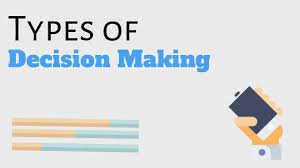7 Essential FAQs on the Strategic Decision-Making Process
- What is the best way to make strategic decisions?
- How can I ensure that my strategic decisions are effective?
- What factors should I consider when making strategic decisions?
- How do I create a plan for successful implementation of my strategy?
- What techniques can I use to evaluate the effectiveness of my strategies?
- How do I identify and manage risks associated with strategic decision-making?
- How do I measure the success of my strategic decisions over time?
What is the best way to make strategic decisions?
There are several ways to make strategic decisions, but here are some best practices that can help you make better decisions:
Define your goals: Before making any strategic decision, it’s important to define your goals and objectives clearly. This will help you stay focused on what you want to achieve and make it easier to evaluate potential options.
Gather information: Collect as much relevant information as possible about the decision you need to make. This includes data, feedback from stakeholders, market trends, and other factors that may impact the decision.
Analyze options: Once you have gathered all of the necessary information, analyze each option carefully. Consider the pros and cons of each option and how they align with your goals.
Evaluate risk: Every strategic decision involves some level of risk. It’s important to evaluate the potential risks associated with each option and determine if they are acceptable or not.
Seek input from others: Don’t be afraid to seek input from others who have experience or expertise in the area you are making a decision about. This can provide valuable insights that can help you make a better decision.
Make a decision: After weighing all of the options and evaluating the risks, it’s time to make a decision. Choose the option that aligns best with your goals and has an acceptable level of risk.
Monitor progress: Once a decision has been made, it’s important to monitor progress regularly and adjust course if necessary.
By following these best practices, you can increase your chances of making better strategic decisions that will help you achieve your goals more effectively over time.
How can I ensure that my strategic decisions are effective?
Ensuring that your strategic decisions are effective requires careful planning and execution. Here are some tips on how to make sure your strategic decisions are effective:
- Define clear objectives: Clearly define the goals you want to achieve with your strategic decision. This will help you stay focused and make sure that your decision is aligned with your overall business strategy.
- Gather relevant information: Collect all the necessary information about the situation, including market trends, customer needs, and competitor analysis. This will help you make an informed decision.
- Evaluate all options: Consider all possible options and evaluate their pros and cons. This will help you identify the best course of action.
- Involve key stakeholders: Involve key stakeholders in the decision-making process to ensure that everyone’s perspectives are taken into account.
- Develop an action plan: Develop a detailed action plan that outlines the steps needed to implement the decision effectively.
- Monitor progress: Regularly monitor progress against the objectives set out in the decision-making process to ensure that everything is on track.
- Be flexible: Be prepared to adapt your strategy if circumstances change or if new information becomes available.
By following these tips, you can increase the likelihood of making effective strategic decisions that will drive your business forward.
What factors should I consider when making strategic decisions?
When making strategic decisions, there are several factors that should be considered to ensure that the decision is well-informed and effective. Here are some of the key factors to consider:
- Goals and Objectives: Consider your organization’s goals and objectives, both short-term and long-term. This will help you align your strategic decisions with your overall vision.
- Resources: Take a look at the resources available to you, including financial resources, personnel, technology, and other assets. This will help you determine what is feasible in terms of implementing your strategic decision.
- Market Analysis: Conduct a thorough analysis of the market to understand your competition, customer needs, and industry trends. This information will help you make informed decisions about how to position your organization in the market.
- Risk Assessment: Evaluate the potential risks associated with each strategic decision and develop a plan to mitigate those risks.
- Stakeholder Input: Consider input from stakeholders such as customers, employees, shareholders, and partners before making any major strategic decisions.
- Implementation Plan: Develop a detailed plan for implementing your strategic decision that includes timelines, resource allocation, milestones, and accountability measures.
By considering these factors when making strategic decisions, you can ensure that your decisions are well-informed and aligned with your organization’s goals and objectives.
How do I create a plan for successful implementation of my strategy?
Creating a plan for successful implementation of your strategy involves several steps. Here are some general guidelines that can help you create an effective plan:
- Define your goals and objectives: Clearly define what you want to achieve with your strategy. Make sure that your goals and objectives are specific, measurable, achievable, relevant, and time-bound (SMART). This will help you stay focused and track progress.
- Identify the resources needed: Determine the resources needed to implement your strategy, including people, technology, equipment, funding, and time. Make sure that you have access to all the necessary resources before starting implementation.
- Develop an action plan: Create a detailed action plan that outlines the specific tasks needed to achieve each objective. Assign responsibilities and deadlines for each task to ensure accountability.
- Communicate the plan: Communicate the implementation plan to all stakeholders involved in the process. Make sure everyone understands their roles and responsibilities.
- Monitor progress: Regularly monitor progress against the action plan to ensure that everything is on track. Identify any issues or challenges early on so that they can be addressed promptly.
- Adjust as needed: Be flexible and willing to adjust your plan as needed based on feedback or changes in circumstances.
- Celebrate success: Recognize and celebrate milestones achieved during implementation to keep morale high and maintain momentum towards achieving your overall goals.
By following these steps, you can create a solid plan for successful implementation of your strategy. Remember that effective implementation is just as important as developing a good strategy in achieving success!
What techniques can I use to evaluate the effectiveness of my strategies?
There are several techniques that you can use to evaluate the effectiveness of your strategies. Here are a few:
- Key Performance Indicators (KPIs): KPIs are measurable values that indicate how well your strategy is performing. You can use KPIs to track progress towards your goals and measure the success of your strategy. Examples of KPIs include sales revenue, customer satisfaction ratings, and website traffic.
- SWOT Analysis: A SWOT analysis is a strategic planning tool that helps you identify the strengths, weaknesses, opportunities, and threats associated with your strategy. By analyzing these factors, you can determine whether your strategy is effective or needs to be revised.
- Customer Feedback: Gathering feedback from customers can help you evaluate the effectiveness of your strategies. You can use surveys, focus groups, or social media to collect feedback on customer satisfaction levels and identify areas for improvement.
- Cost-Benefit Analysis: A cost-benefit analysis helps you determine whether the benefits of a particular strategy outweigh the costs associated with it. By analyzing the costs and benefits of different strategies, you can determine which ones are most effective.
- Benchmarking: Benchmarking involves comparing your performance against industry standards or competitors to identify areas for improvement. By comparing yourself to others in your industry, you can determine whether your strategies are effective or need improvement.
By using these techniques, you can evaluate the effectiveness of your strategies and make informed decisions about how to improve them in the future.
How do I identify and manage risks associated with strategic decision-making?
Identifying and managing risks associated with strategic decision-making is crucial to the success of any organization. Here are some steps you can take to identify and manage risks:
- Identify potential risks: Start by identifying all the potential risks that could arise from your strategic decision-making process. This includes internal and external factors that could impact your organization.
- Assess the likelihood and impact of each risk: Once you have identified all the potential risks, assess the likelihood and impact of each risk. This will help you prioritize which risks to focus on first.
- Develop a risk management plan: Develop a plan to manage each identified risk. This should include strategies for mitigating or avoiding the risk altogether.
- Monitor and review your risk management plan: Regularly monitor and review your risk management plan to ensure it is still effective and relevant.
- Communicate with stakeholders: Communicate with stakeholders about the identified risks and how they will be managed. This will help ensure everyone is aware of potential risks and what steps are being taken to manage them.
- Continuously improve your risk management process: Continuously improve your risk management process by learning from past experiences, updating your strategies, and staying up-to-date on industry trends.
By following these steps, you can identify and manage risks associated with strategic decision-making, which will help ensure the success of your organization in achieving its goals.
How do I measure the success of my strategic decisions over time?
Measuring the success of your strategic decisions over time can be a complex process, but there are several key metrics that you can use to evaluate the effectiveness of your decision-making.
- Financial performance: One of the most obvious ways to measure the success of your strategic decisions is to look at your financial performance. This includes metrics such as revenue growth, profitability, and return on investment (ROI). By tracking these numbers over time, you can see how your decisions are impacting your bottom line.
- Customer satisfaction: Another important metric to consider is customer satisfaction. This can be measured through surveys, reviews, and other feedback mechanisms. By monitoring customer satisfaction levels over time, you can see whether your decisions are positively or negatively impacting the customer experience.
- Employee engagement: Your employees are a critical factor in the success of your business, so it’s important to measure their engagement levels over time. This includes metrics such as turnover rates, employee satisfaction scores, and productivity levels.
- Market share: If you’re operating in a competitive market, tracking your market share over time can be a good indicator of how well your strategic decisions are working. If you’re gaining market share, it’s likely that your decisions are having a positive impact on your business.
- Innovation: Finally, it’s important to track how well you’re innovating over time. This includes metrics such as new product launches, patent filings, and R&D spending. By measuring innovation over time, you can see whether your strategic decisions are helping you stay ahead of the competition.
Overall, measuring the success of your strategic decisions requires a holistic approach that takes into account financial performance, customer satisfaction, employee engagement, market share and innovation among other indicators. It’s important to regularly review these metrics in order to make informed decisions about future strategies and tactics for continued growth and success.



